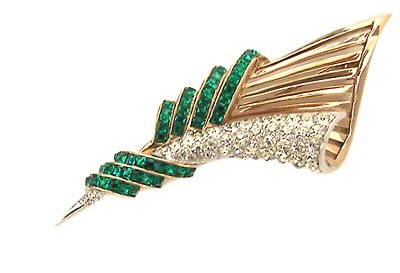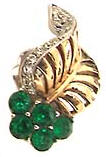|




|
Emerald

 |
Emerald is a green colored gemstone. Emerald gets its
glossy green color from the presence of chromium and vanadium. The name
emerald comes from the Greek 'smaragdos' via the Old French 'esmeralde', and
really just means 'green gemstone'. Innumerable fantastic
stories have grown up around this magnificent gem. The Incas and
Aztecs of South America, where the best emeralds are still found
today, regarded the emerald as a holy gemstone. However,
probably the oldest known finds were once made near the Red Sea
in Egypt. Having said that, these gemstone mines, already
exploited by Egyptian pharaohs between 3000 and 1500 B.C. and
later referred to as 'Cleopatra's Mines', had already been
exhausted by the time they were rediscovered in the early 19th
century. Emeralds are rarely flawless and are often oiled to
hide the flaws, cracks and enhance color. However,
really good quality is fairly rare, with inclusions often
marring the evenness of the colour – |
|
signs of the turbulent
genesis which has characterised this gemstone. Fine inclusions, however, do
not by any means diminish the high regard in which it is held. On the
contrary: even with inclusions, an emerald in a deep, lively green still has
a much higher value than an almost flawless emerald whose colour is paler.
Affectionately, and rather poetically, the specialists call the numerous
crystal inclusions, cracks or fissures which are typical of this gemstone 'jardin'.
They regard the tender little green plants in the emerald garden as features
of the identity of a gem which has grown naturally. Emeralds were widely
used in historical jewelry, ancient engravings and cameos. Today also
emeralds are used in modern jewelry. Emerald is mainly found in Sri Lanka,
Egypt, Brazil, South Africa, Norway and Zimbabwe. |
   |

Natural Gemstones
|
|
|
|
|
|
|